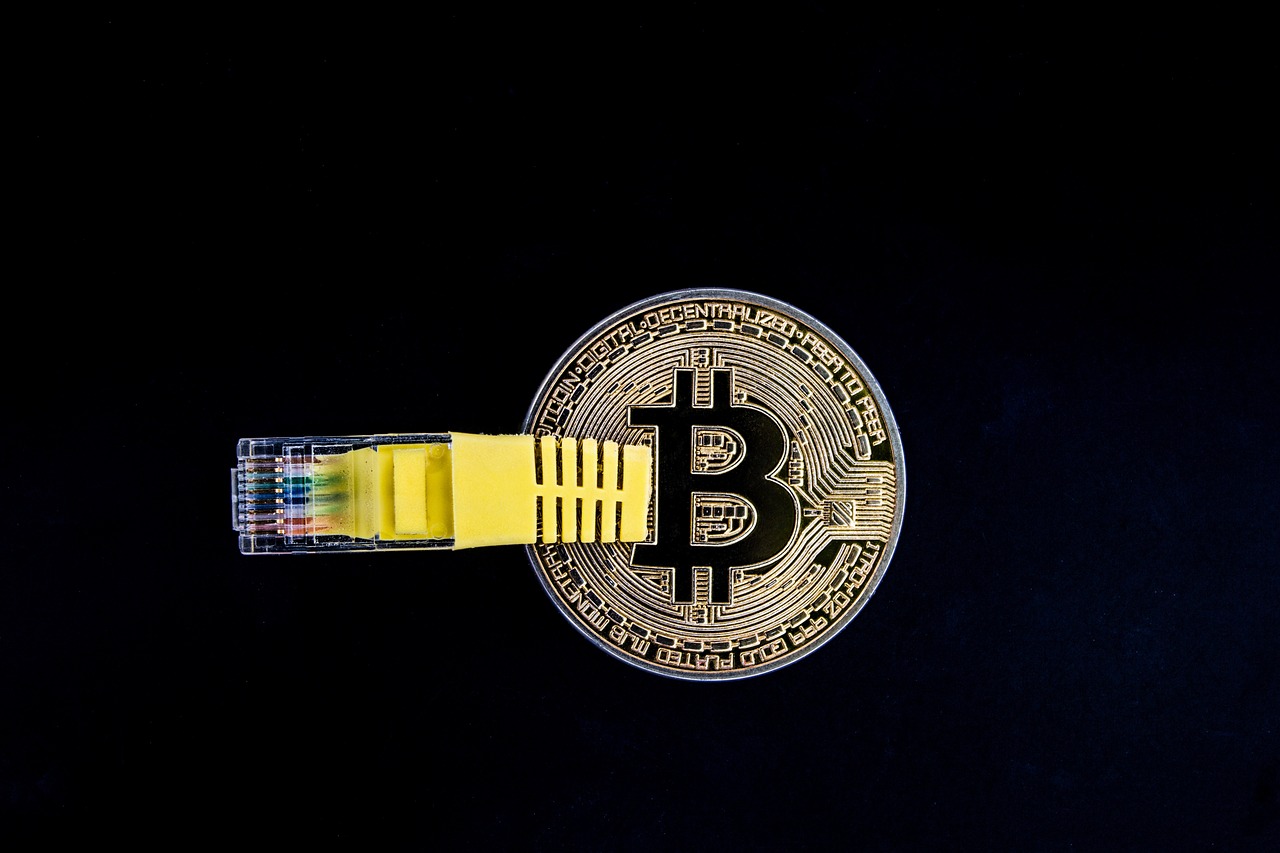The Growing Influence of Crypto on Traditional Finance
The world of finance is undergoing a radical transformation, and at the heart of this evolution lies cryptocurrency. Once considered a niche market, cryptocurrencies have surged into the mainstream, capturing the attention of investors, institutions, and consumers alike. But what exactly is driving this change? In this article, we will explore how cryptocurrencies are reshaping traditional financial systems, examining their impact on banking, investment strategies, regulations, and consumer behavior. We will also highlight the opportunities and challenges that arise from this evolution, making it clear that the influence of crypto is not just a passing trend but a significant shift that will define the future of finance.
The emergence of cryptocurrencies can be traced back to the launch of Bitcoin in 2009, which introduced a new way to think about money and transactions. Built on blockchain technology, cryptocurrencies offer a decentralized and secure method of transferring value without the need for traditional intermediaries like banks. This has led to a rapid growth in popularity, fueled by factors such as the increasing distrust in traditional financial institutions, the desire for financial independence, and the allure of potential high returns. As more people become aware of the benefits of cryptocurrencies, the market has expanded to include thousands of different coins and tokens, each with unique features and use cases.
As cryptocurrencies gain traction, they are starting to challenge the very foundations of traditional banking systems. With the rise of decentralized finance (DeFi), consumers now have access to a range of financial services that bypass traditional banks. This shift is not just about technology; it represents a fundamental change in how we view and interact with money. Banks are no longer the sole gatekeepers of financial services, and this has profound implications for customer relationships and the services offered.
DeFi is a game-changer in the financial landscape, allowing users to lend, borrow, and trade without the need for intermediaries. Imagine a world where you can earn interest on your savings or take out loans without ever stepping foot in a bank. This is the promise of DeFi, and it’s gaining significant traction. However, it’s not without its challenges. Issues such as security vulnerabilities, regulatory uncertainty, and the complexity of the technology can pose risks to users. Nevertheless, the potential for innovation is enormous.
One of the cornerstones of DeFi is the use of smart contracts. These self-executing contracts automate transactions on the blockchain, eliminating the need for intermediaries and reducing costs. They enhance efficiency and security in financial transactions by ensuring that all parties adhere to the agreed-upon terms. Imagine a vending machine that automatically dispenses your drink once you insert the correct amount of money; that’s how smart contracts work in the financial world. However, as with any technology, they come with their own set of challenges, including coding errors and potential exploits.
Another critical component of DeFi is the concept of liquidity pools. These are collections of funds that allow users to provide liquidity in exchange for rewards, typically in the form of transaction fees or interest. This mechanism is essential for the functioning of decentralized exchanges and lending platforms. It’s like a community pot where everyone contributes to a shared resource, benefiting all participants. However, the implications for traditional liquidity models are significant, as they challenge the way banks manage their reserves and offer services.
As cryptocurrencies and DeFi continue to grow, traditional banks are facing numerous challenges. They must contend with increased competition from these new players, regulatory hurdles that could stifle innovation, and the pressing need to adapt and innovate to retain customers. The financial landscape is changing rapidly, and banks that fail to embrace this change risk becoming obsolete. They must find ways to integrate new technologies, offer competitive services, and rebuild trust with consumers who are increasingly turning to alternatives.
With the rise of cryptocurrencies, investors are exploring various strategies to capitalize on this new asset class. The volatility of the crypto market presents both risks and opportunities, making it essential for investors to understand their options. Some may prefer long-term holding strategies, betting on the future growth of cryptocurrencies, while others may opt for short-term trading, attempting to profit from price fluctuations. Each approach has its advantages and disadvantages, and understanding these can help investors make informed decisions.
When it comes to investing in cryptocurrencies, the debate between long-term and short-term strategies is ongoing. Long-term investors believe in the potential of cryptocurrencies to revolutionize finance and are willing to weather the market's ups and downs. On the other hand, short-term traders thrive on market volatility, aiming to make quick profits. Both strategies can be successful, but they require different mindsets and risk tolerances. It’s like deciding between planting a tree for shade in the future or picking fruits from a bush today; both have their merits.
Incorporating cryptocurrencies into investment portfolios can enhance diversification. By balancing traditional assets with crypto, investors can mitigate risks and maximize returns. This strategy is akin to not putting all your eggs in one basket; it spreads risk across various asset classes. However, it’s crucial for investors to conduct thorough research and understand the unique characteristics of cryptocurrencies before diving in.
- What are cryptocurrencies? Cryptocurrencies are digital or virtual currencies that use cryptography for security and operate on decentralized networks based on blockchain technology.
- How do cryptocurrencies impact traditional finance? Cryptocurrencies challenge traditional banking systems, introduce new financial services through DeFi, and offer innovative investment opportunities.
- What are the risks associated with investing in cryptocurrencies? Risks include market volatility, regulatory uncertainty, and potential security vulnerabilities.
- Can traditional banks adapt to the rise of cryptocurrencies? Yes, banks can adapt by integrating new technologies, offering competitive services, and embracing innovation.

The Rise of Cryptocurrencies
The world of finance has undergone a seismic shift with the emergence of cryptocurrencies. What started as a niche concept in the early 2000s has blossomed into a global phenomenon, captivating the attention of investors, technologists, and everyday consumers alike. At the heart of this revolution lies blockchain technology, a decentralized ledger that not only supports cryptocurrencies like Bitcoin and Ethereum but also promises to transform various aspects of our financial systems.
So, what exactly fueled this rapid ascent? Several factors contribute to the growing popularity of cryptocurrencies. Firstly, the increasing distrust in traditional banking institutions has driven people to seek alternatives. The 2008 financial crisis left many feeling disillusioned with conventional banks, prompting a search for more transparent and secure financial solutions. Cryptocurrencies offer a way to bypass traditional institutions, allowing users to maintain control over their assets without the need for intermediaries.
Moreover, the rise of the internet and mobile technology has made it easier than ever for people to access and trade cryptocurrencies. With just a smartphone and an internet connection, anyone can buy, sell, or hold digital currencies. This accessibility has democratized finance, enabling individuals from all walks of life to participate in the crypto market.
Additionally, the potential for high returns has attracted a diverse range of investors. The meteoric rise in the value of Bitcoin and other altcoins has created a sense of urgency and excitement, with many seeing crypto as a modern-day gold rush. However, it's essential to remember that with high rewards come significant risks. The volatility of cryptocurrency prices can lead to substantial losses, making it crucial for investors to do their homework before diving in.
Another factor that has contributed to the rise of cryptocurrencies is the growing acceptance among businesses. More and more companies are beginning to accept cryptocurrencies as a form of payment, further legitimizing their use. Major corporations like Tesla and Square have embraced Bitcoin, paving the way for others to follow suit. This trend not only enhances the visibility of cryptocurrencies but also encourages consumers to adopt them for everyday transactions.
In summary, the rise of cryptocurrencies can be attributed to a combination of factors: dissatisfaction with traditional banking, technological advancements, the allure of high returns, and increasing acceptance among businesses. As we continue to explore the impact of crypto on traditional finance, it’s clear that this digital revolution is just getting started. The question now is, how will these changes shape the future of our financial ecosystem?
- What are cryptocurrencies? Cryptocurrencies are digital or virtual currencies that use cryptography for security and operate on a technology called blockchain.
- Why are cryptocurrencies becoming popular? Factors such as distrust in traditional banking, technological accessibility, potential for high returns, and acceptance by businesses contribute to their popularity.
- Are cryptocurrencies safe to invest in? While they can offer high returns, cryptocurrencies are also highly volatile and come with significant risks. It's essential to research and understand the market before investing.
- How do I buy cryptocurrencies? You can buy cryptocurrencies through various platforms known as exchanges, which allow you to trade traditional currency for digital assets.

Impact on Banking Systems
The advent of cryptocurrencies is not just a passing trend; it's a seismic shift that is reshaping the very foundations of traditional banking systems. Imagine a world where financial transactions occur without the need for intermediaries, where your money flows directly from one person to another without the oversight of a bank. This is the reality that cryptocurrencies are ushering in, and it's causing traditional banks to rethink their roles in the financial ecosystem. As digital currencies gain traction, the implications for banking are profound and multifaceted.
At the heart of this transformation lies the concept of Decentralized Finance (DeFi). DeFi platforms leverage blockchain technology to create financial services that operate independently of traditional banking institutions. This means that individuals can lend, borrow, and trade assets without relying on a bank's infrastructure. The rise of DeFi is akin to a digital gold rush, enticing investors and consumers alike with the promise of greater financial freedom and accessibility.
DeFi represents a radical departure from conventional banking models. It democratizes finance by allowing anyone with an internet connection to participate in financial activities that were once exclusive to the banking elite. Users can engage in activities such as:
- Lending: Users can lend their assets to others in exchange for interest, effectively becoming their own banks.
- Borrowing: Individuals can take out loans without the need for credit checks or lengthy approval processes.
- Trading: Crypto exchanges enable users to trade a variety of digital assets with minimal fees and instant transactions.
This shift not only challenges the traditional banking model but also raises questions about customer relationships. As consumers increasingly turn to DeFi solutions, banks must innovate to retain their clientele. The challenge is not just about competing with DeFi platforms; it's also about redefining the value they offer to customers.
One of the most exciting aspects of DeFi is the use of smart contracts. These self-executing contracts with the terms of the agreement directly written into code eliminate the need for intermediaries. Imagine a vending machine: you insert your money, select your item, and the machine automatically delivers it without any human involvement. Similarly, smart contracts facilitate transactions automatically, enhancing both efficiency and security. This innovation minimizes the risk of fraud and errors, making financial transactions more reliable than ever.
Another critical component of DeFi is liquidity pools. These are collections of funds locked in a smart contract that provide liquidity for trading on decentralized exchanges. Users can contribute their assets to these pools and, in return, earn rewards. Think of liquidity pools as a community pool where everyone contributes to create a larger resource that benefits all participants. This model not only enhances trading efficiency but also challenges traditional liquidity models by allowing users to earn passive income on their assets.
As cryptocurrencies and DeFi continue to gain momentum, traditional banks are facing a multitude of challenges. The competition is fierce, and banks must adapt to a rapidly evolving landscape. Regulatory hurdles are another significant concern; as governments scramble to catch up with the pace of innovation, banks must navigate a complex web of regulations that could impact their operations. Furthermore, the need for innovation is paramount. Banks that fail to embrace new technologies risk losing customers to more agile, tech-savvy competitors.
In conclusion, the impact of cryptocurrencies on banking systems is profound and multifaceted. As DeFi continues to grow, traditional banks must reevaluate their strategies, embrace innovation, and find ways to integrate new technologies into their services. The future of finance is here, and it's decentralized.
Q1: What is DeFi?
A1: DeFi, or Decentralized Finance, refers to a financial system built on blockchain technology that allows users to lend, borrow, and trade without intermediaries like banks.
Q2: How do smart contracts work?
A2: Smart contracts are self-executing contracts with the terms of the agreement directly written into code, enabling automated transactions without the need for intermediaries.
Q3: What are liquidity pools?
A3: Liquidity pools are collections of funds locked in a smart contract that provide liquidity for trading on decentralized exchanges, allowing users to earn rewards for contributing their assets.
Q4: What challenges do traditional banks face due to cryptocurrencies?
A4: Traditional banks face challenges such as increased competition from DeFi platforms, regulatory hurdles, and the need to innovate to retain customers in a rapidly changing financial environment.

Decentralized Finance (DeFi)
Decentralized Finance, commonly known as DeFi, is revolutionizing the way we think about finance. Imagine a world where you can lend, borrow, and trade assets without the need for a traditional bank. Sounds like a dream, right? Well, that dream is becoming a reality as DeFi platforms leverage blockchain technology to create a more open, accessible, and efficient financial ecosystem. The beauty of DeFi lies in its ability to eliminate intermediaries, allowing users to engage directly with financial services. This is akin to having a personal bank that operates on your terms, 24/7, without the constraints of traditional banking hours or bureaucratic red tape.
At its core, DeFi encompasses a wide range of financial services, including lending, borrowing, trading, and earning interest on crypto assets. Users can participate in these services through decentralized applications (dApps) that run on blockchain networks, primarily Ethereum. This shift towards decentralization not only empowers users but also introduces a new level of transparency and security. Since transactions are recorded on a public ledger, anyone can verify the flow of funds, significantly reducing the risk of fraud.
However, while DeFi presents exciting opportunities, it also comes with its own set of challenges. The rapid growth of DeFi has led to a surge in popularity, but it has also attracted a fair share of scams and vulnerabilities. For instance, smart contracts, which are self-executing contracts with the terms of the agreement directly written into code, can have bugs or security flaws that hackers might exploit. Thus, while DeFi offers a tantalizing glimpse into the future of finance, it is crucial for users to conduct thorough research and exercise caution.
To better understand the mechanics of DeFi, let’s take a closer look at some of its key components:
| Component | Description |
|---|---|
| Smart Contracts | Automated contracts that execute transactions on the blockchain without intermediaries. |
| Liquidity Pools | Collections of funds locked in smart contracts that facilitate trading and lending. |
| Yield Farming | The practice of staking or lending crypto assets to generate high returns. |
In summary, DeFi is not just a buzzword; it's a transformative movement that is reshaping the financial landscape. It empowers individuals by providing them with greater control over their assets and financial decisions. However, as with any emerging technology, it’s essential to stay informed about the risks and developments in this space. Just as the internet transformed communication, DeFi has the potential to revolutionize finance, offering a glimpse into a future where traditional banking models may no longer hold sway.
- What is DeFi? DeFi stands for Decentralized Finance, which refers to financial services that operate on blockchain technology without intermediaries.
- How does DeFi work? DeFi works through decentralized applications (dApps) that allow users to lend, borrow, and trade assets directly on the blockchain.
- What are the risks associated with DeFi? Risks include smart contract vulnerabilities, market volatility, and potential scams.
- Can I earn interest on my crypto assets in DeFi? Yes, many DeFi platforms allow users to earn interest by lending their crypto assets or providing liquidity.

Smart Contracts
Smart contracts are revolutionizing the way we think about transactions and agreements in the financial world. Imagine a digital vending machine: you insert the right amount of money, and out pops your snack without needing a cashier. That’s essentially how smart contracts work, but instead of snacks, they handle complex agreements automatically on the blockchain. These self-executing contracts are coded to execute specific actions when predetermined conditions are met, eliminating the need for intermediaries and reducing the risk of fraud.
What makes smart contracts particularly fascinating is their ability to enhance both efficiency and security. By automating processes, they significantly cut down on the time and costs associated with traditional contract management. For instance, in real estate transactions, a smart contract can automatically transfer ownership of a property once payment is confirmed, streamlining what used to be a lengthy and cumbersome process. This not only saves time but also minimizes the potential for human error.
However, while the benefits are substantial, there are also challenges to consider. Smart contracts rely heavily on the accuracy of the data fed into them. If the information is incorrect or manipulated, the entire contract could fail, leading to unintended consequences. Furthermore, the legal standing of smart contracts is still a gray area in many jurisdictions, raising questions about enforceability and compliance with existing laws.
To give you a clearer picture of how smart contracts function, let’s look at a simple example:
| Condition | Action |
|---|---|
| Buyer sends payment | Transfer ownership of the asset |
| Asset condition is verified | Release funds to the seller |
In this example, the smart contract is set to execute two primary actions based on specific conditions. If the buyer sends the payment, the contract automatically transfers ownership of the asset. If the asset condition is verified—perhaps by a third-party oracle—the funds are released to the seller. This automated process not only speeds things up but also enhances trust, as all parties can see the contract’s execution on the blockchain.
As we move deeper into the world of decentralized finance (DeFi), smart contracts will likely become even more integral, facilitating everything from lending to insurance without traditional financial intermediaries. The potential is enormous, and it’s clear that smart contracts are not just a passing trend; they are a fundamental part of the future of finance.
- What is a smart contract? A smart contract is a self-executing contract with the terms of the agreement directly written into code, which runs on a blockchain.
- Are smart contracts legally binding? The legal status of smart contracts varies by jurisdiction, and while they can be enforceable, it often depends on the specific laws of the area.
- What are the risks associated with smart contracts? Risks include coding errors, reliance on accurate data inputs, and the potential for legal ambiguities.
- How do smart contracts improve efficiency? By automating processes and eliminating intermediaries, smart contracts can significantly reduce transaction times and costs.

Liquidity Pools
Liquidity pools are a fundamental component of the decentralized finance (DeFi) ecosystem, acting as a reservoir of funds that enables trading and lending activities on various platforms. Imagine a bustling marketplace where vendors gather to sell their goods; liquidity pools serve a similar purpose by providing the necessary capital that facilitates transactions between buyers and sellers without the need for a traditional intermediary. This innovative approach not only democratizes access to financial services but also opens up exciting opportunities for both liquidity providers and traders.
At their core, liquidity pools consist of a collection of cryptocurrencies locked in a smart contract. These funds are made available for trading, allowing users to swap tokens seamlessly while ensuring that there is always enough liquidity to meet demand. When individuals contribute their assets to a liquidity pool, they are essentially acting as market makers, helping to stabilize prices and improve the overall efficiency of the trading platform. In return for their contributions, liquidity providers earn rewards, typically in the form of transaction fees or additional tokens, creating a mutually beneficial relationship.
To better understand how liquidity pools operate, consider the following key aspects:
- Automated Market Making (AMM): Unlike traditional exchanges that rely on order books, liquidity pools utilize AMM algorithms to determine prices based on the ratio of assets within the pool. This means that prices adjust automatically as trades occur, ensuring that liquidity remains available.
- Impermanent Loss: While providing liquidity can be profitable, it is essential to be aware of impermanent loss, which occurs when the value of the assets in the pool diverges significantly from their original value. This phenomenon can impact the overall returns for liquidity providers.
- Yield Farming: Many DeFi platforms incentivize liquidity provision through yield farming, where users can earn additional rewards by locking their assets in a liquidity pool for a specified period. This strategy can amplify returns but also comes with increased risk.
As the DeFi landscape continues to evolve, liquidity pools are becoming increasingly sophisticated, with new protocols and strategies emerging to enhance their functionality. For instance, some platforms are introducing multi-token pools, allowing users to provide liquidity with a combination of assets, thereby diversifying risk and potential rewards. Additionally, innovative solutions like concentrated liquidity are enabling liquidity providers to concentrate their capital in specific price ranges, maximizing efficiency and returns.
However, despite their advantages, liquidity pools also present challenges. The volatility of cryptocurrencies can lead to rapid fluctuations in asset values, making it crucial for liquidity providers to stay informed and manage their risks effectively. Furthermore, the regulatory landscape surrounding DeFi is still developing, which could impact the long-term viability of these pools.
In summary, liquidity pools play a pivotal role in the DeFi ecosystem, offering a novel way for individuals to participate in the financial markets while earning rewards. By understanding the mechanics and risks associated with liquidity pools, participants can navigate this exciting new frontier and potentially reap the benefits of this innovative financial model.
- What are liquidity pools? Liquidity pools are collections of cryptocurrencies locked in a smart contract that facilitate trading and lending on DeFi platforms.
- How do I earn rewards from liquidity pools? By providing liquidity to a pool, you can earn rewards through transaction fees and yield farming incentives.
- What is impermanent loss? Impermanent loss occurs when the value of your assets in a liquidity pool diverges from their original value, potentially impacting your returns.
- Are liquidity pools safe? While they offer opportunities for profit, liquidity pools come with risks, including volatility and regulatory uncertainty. It's essential to do thorough research before participating.

Challenges for Traditional Banks
The emergence of cryptocurrencies has thrown traditional banks into a whirlwind of challenges that they never saw coming. Imagine a tidal wave crashing onto a serene beach; that’s how disruptive the rise of digital currencies has been for the banking sector. As consumers and investors flock to the allure of cryptocurrencies, traditional banks are feeling the heat. They face a multitude of challenges that range from increased competition to regulatory hurdles, and the pressing need to innovate to keep up with the rapidly evolving financial landscape.
One of the primary challenges is the **competition** posed by decentralized finance (DeFi) platforms. Unlike traditional banks, which operate under a centralized model, DeFi allows users to engage in financial transactions without the need for intermediaries. This shift not only attracts tech-savvy millennials and Gen Z but also offers lower fees and higher interest rates, making traditional banking services seem outdated. In fact, many consumers are beginning to question why they should pay hefty fees for services that they can access through a smartphone app with just a few clicks.
Moreover, regulatory hurdles present a significant obstacle for traditional banks. As governments and regulatory bodies scramble to catch up with the fast-paced world of cryptocurrencies, banks must navigate a complex web of regulations that can vary dramatically from one jurisdiction to another. This uncertainty can stifle innovation, as banks may be hesitant to invest in new technologies or services that could be deemed non-compliant. In contrast, many crypto startups operate in a more agile environment, allowing them to adapt quickly and seize market opportunities.
In addition to competition and regulatory issues, traditional banks must also contend with changing consumer expectations. Today’s customers demand **transparency**, **speed**, and **convenience**. They want to manage their finances on their terms, and if banks can't deliver, they'll look elsewhere. The rise of digital wallets and peer-to-peer payment systems has further complicated matters, as consumers have become accustomed to instant transactions and seamless experiences. Traditional banks must innovate to provide these services, or risk losing their customer base to more agile competitors.
Another significant challenge is the need for banks to invest in new technologies. The digital transformation of the banking industry is no longer optional; it’s essential. Banks must adopt blockchain technology, artificial intelligence, and machine learning to streamline operations and enhance customer experiences. However, this requires substantial investment and a cultural shift within the organization, which can be met with resistance from traditionalists within the banking sector.
To illustrate the challenges facing traditional banks, let’s take a look at a simple comparison table:
| Challenge | Traditional Banks | Cryptocurrency Platforms |
|---|---|---|
| Competition | Centralized services with higher fees | Decentralized services with lower fees |
| Regulatory Issues | Complex regulations across jurisdictions | Agile and often less regulated |
| Consumer Expectations | Slower, less transparent services | Instant, user-friendly experiences |
| Investment in Technology | Slow to adopt new technologies | Fast-paced innovation and adaptation |
In conclusion, traditional banks are at a crossroads, faced with unprecedented challenges from the rise of cryptocurrencies and the broader DeFi movement. They must adapt to survive, embracing innovation and rethinking their business models to meet the demands of today’s consumers. Failure to do so could lead to their obsolescence in a world that increasingly favors flexibility and decentralization.
- What are the main challenges traditional banks face due to cryptocurrencies? Traditional banks are challenged by increased competition from DeFi platforms, regulatory hurdles, changing consumer expectations, and the need for technological investment.
- How does DeFi differ from traditional banking? DeFi operates on a decentralized model, allowing users to conduct financial transactions without intermediaries, often at lower costs and with greater transparency.
- What must banks do to remain competitive? Banks need to innovate, streamline operations, adopt new technologies, and enhance customer experiences to retain their market share.

Investment Strategies in Crypto
As the world of finance evolves, cryptocurrencies have emerged as a compelling asset class, attracting the attention of both seasoned investors and curious newcomers. But diving into the crypto market isn't just about buying Bitcoin and hoping for the best; it requires a thoughtful approach to investment strategies. Understanding the landscape can help you navigate the unpredictable waters of digital currencies and potentially maximize your returns.
One of the first things to consider is whether you lean towards long-term investments or prefer the thrill of short-term trading. Long-term investors typically buy and hold cryptocurrencies, believing that their value will appreciate over time. This strategy can be likened to planting a tree: it takes time to grow, but once it does, the fruits can be plentiful. On the other hand, short-term traders often capitalize on market volatility, buying and selling on price fluctuations. This approach is more like surfing—riding the waves of market trends, but it comes with its own set of risks and requires a keen eye on market movements.
To further enrich your investment strategy, consider the concept of portfolio diversification. Just as you wouldn't put all your eggs in one basket in traditional investing, the same principle applies to crypto. By incorporating a mix of cryptocurrencies alongside traditional assets like stocks and bonds, you can mitigate risks and enhance your overall portfolio performance. For instance, you might allocate a certain percentage to established coins like Bitcoin and Ethereum, while also exploring smaller altcoins that have potential for growth.
| Asset Class | Percentage Allocation |
|---|---|
| Bitcoin | 40% |
| Ethereum | 30% |
| Altcoins | 20% |
| Traditional Assets | 10% |
However, while diversification can help balance risk, it's essential to stay informed about the crypto market's ever-changing dynamics. Regularly reviewing your portfolio and adjusting your strategy based on market conditions is crucial. After all, the crypto landscape is as volatile as a roller coaster, and being proactive can make all the difference.
Another vital aspect of crypto investing is understanding the risks involved. Cryptocurrencies are notorious for their price volatility, and while this can lead to significant profits, it can also result in substantial losses. Therefore, it's wise to invest only what you can afford to lose. Additionally, consider setting stop-loss orders to protect your investments from sudden market downturns.
Lastly, always keep an eye on emerging trends and technologies within the crypto space. Innovations like DeFi and NFTs are reshaping the financial landscape, offering new opportunities for savvy investors. By staying informed and adaptable, you can position yourself to take advantage of the next big thing in crypto.
- What is the best cryptocurrency to invest in? - The best cryptocurrency depends on your investment strategy and risk tolerance. Bitcoin and Ethereum are often considered safe bets, while altcoins can offer higher potential returns.
- How much should I invest in cryptocurrencies? - It's recommended to invest only what you can afford to lose, and consider starting with a small percentage of your overall portfolio.
- What is the difference between long-term and short-term investing? - Long-term investing involves holding assets for an extended period, while short-term trading focuses on taking advantage of price fluctuations.

Long-term vs. Short-term Investments
When it comes to investing in cryptocurrencies, one of the most crucial decisions you'll face is whether to adopt a long-term or short-term strategy. Each approach has its unique flavor, much like choosing between a rich, slow-cooked stew and a quick, zesty stir-fry. Both can be satisfying, but they cater to different tastes and appetites for risk.
Long-term investors, often referred to as "HODLers," buy cryptocurrencies with the intention of holding onto them for an extended period—sometimes even years. The idea is to ride out the market's inevitable ups and downs, banking on the belief that the value will appreciate significantly over time. This strategy is akin to planting a tree and patiently waiting for it to bear fruit. The benefits of this approach include reduced transaction fees and less stress from daily price fluctuations. However, it requires a strong conviction in the underlying technology and a willingness to ignore market noise.
On the flip side, short-term investors, or traders, thrive on the volatility of the crypto market. They buy and sell assets within a short time frame—sometimes within minutes or hours—capitalizing on price movements to make quick profits. This is similar to a roller coaster ride: exhilarating, but it can also be quite risky. Short-term trading can lead to significant returns, but it also exposes investors to the potential for rapid losses. It requires constant market monitoring, technical analysis, and a keen understanding of market trends, which can be time-consuming and stressful.
To further illustrate the differences, let's look at a comparison of the two strategies:
| Criteria | Long-term Investments | Short-term Investments |
|---|---|---|
| Time Horizon | Years | Days/Hours |
| Risk Level | Lower (if well-researched) | Higher (due to volatility) |
| Transaction Frequency | Low | High |
| Emotional Stress | Lower | Higher |
| Research Required | Fundamental analysis | Technical analysis |
Ultimately, the choice between long-term and short-term investments in crypto boils down to your personal goals, risk tolerance, and investment style. Are you looking to build wealth over time, or are you more interested in capitalizing on rapid price movements? Understanding your own financial objectives is essential in navigating this exciting yet unpredictable landscape.
As the crypto market continues to evolve, incorporating both strategies into your investment portfolio might be the best approach. By balancing your assets—holding some for the long haul while actively trading others—you can potentially mitigate risks while maximizing returns. Just remember, whether you're planting a tree or riding a roller coaster, it's all about finding the right balance for your unique investment journey.
- What is the best investment strategy for beginners in crypto? Beginners might consider starting with a long-term strategy to minimize stress and learn the market over time.
- Can I combine both long-term and short-term strategies? Absolutely! Many investors find success by diversifying their approach.
- What are the risks of short-term trading? Short-term trading can lead to significant losses due to market volatility, so it's crucial to stay informed and manage your investments carefully.

Portfolio Diversification
In the ever-evolving landscape of finance, has become a crucial strategy for investors looking to balance risk and reward. As cryptocurrencies gain traction as a legitimate asset class, the question arises: how can investors effectively integrate these digital currencies into their existing portfolios? The answer lies in understanding the unique characteristics of cryptocurrencies and how they interact with traditional assets.
First off, let’s break down what portfolio diversification really means. It’s like not putting all your eggs in one basket. By spreading investments across different asset classes—such as stocks, bonds, and now, cryptocurrencies—investors can mitigate potential losses. Cryptocurrencies, with their high volatility, present both opportunities and risks. For instance, while Bitcoin and Ethereum may experience dramatic price swings, they can also yield substantial returns that traditional assets might not offer.
One of the most compelling reasons to consider adding cryptocurrencies to your portfolio is their low correlation with traditional assets. This means that when stock markets are down, cryptocurrencies might not follow suit, providing a buffer against market downturns. For example, during the COVID-19 pandemic, many investors flocked to Bitcoin as a hedge against inflation and economic uncertainty, showcasing its potential as a safe haven asset.
However, it's essential to approach crypto investments with caution. The market is notoriously volatile, and prices can fluctuate wildly based on news, regulatory changes, or market sentiment. Therefore, investors should consider allocating only a small percentage of their total portfolio to cryptocurrencies—typically between 5% to 10%. This way, they can enjoy the benefits of potential high returns while minimizing exposure to risk.
When incorporating cryptocurrencies into a diversified portfolio, it’s also crucial to consider the different types of cryptocurrencies available. Here’s a quick overview:
| Type of Cryptocurrency | Characteristics | Examples |
|---|---|---|
| Bitcoin | First and most widely recognized cryptocurrency; often seen as digital gold. | BTC |
| Altcoins | Alternative cryptocurrencies to Bitcoin; often have unique features or use cases. | Ethereum (ETH), Litecoin (LTC) |
| Stablecoins | Cryptocurrencies pegged to stable assets like the US dollar; reduce volatility. | USDC, Tether (USDT) |
By understanding the different types of cryptocurrencies, investors can make informed decisions about which assets to include in their portfolios. For instance, a mix of Bitcoin for its potential appreciation, stablecoins for stability, and select altcoins for growth could create a well-rounded crypto investment strategy.
In conclusion, is not just a buzzword; it’s a fundamental principle of investing that can lead to greater financial security and growth. By thoughtfully integrating cryptocurrencies into their portfolios, investors can harness the potential of this digital revolution while safeguarding against the inherent risks of the market. So, are you ready to take the plunge into the world of crypto?
- What is the best way to start investing in cryptocurrencies? Begin by researching different cryptocurrencies, understanding their use cases, and starting with a small investment.
- How much of my portfolio should I allocate to cryptocurrencies? A general guideline is to allocate between 5% to 10% of your total investment portfolio to cryptocurrencies.
- Are cryptocurrencies safe investments? While cryptocurrencies can offer high returns, they are also highly volatile and come with significant risks.
Frequently Asked Questions
- What are cryptocurrencies?
Cryptocurrencies are digital or virtual currencies that use cryptography for security. They are decentralized and typically based on blockchain technology, which ensures transparency and security. Unlike traditional currencies, they are not controlled by any central authority, making them immune to government interference or manipulation.
- How do cryptocurrencies impact traditional banking?
Cryptocurrencies challenge traditional banking models by introducing decentralized finance (DeFi) solutions that allow users to lend, borrow, and trade without intermediaries. This shift is forcing banks to innovate and adapt to retain customers, as more people explore alternatives to conventional banking services.
- What are smart contracts?
Smart contracts are self-executing contracts with the terms of the agreement directly written into code. They run on blockchain technology and automate transactions, reducing the need for intermediaries. This enhances efficiency and security, allowing for faster and more reliable financial transactions.
- What are liquidity pools in DeFi?
Liquidity pools are collections of funds locked in a smart contract that provide liquidity for decentralized exchanges and other DeFi platforms. Users contribute to these pools and, in return, earn rewards. They play a crucial role in facilitating trading and maintaining market stability in the crypto space.
- What investment strategies should I consider for cryptocurrencies?
When investing in cryptocurrencies, you can consider long-term holding strategies, which focus on buying and holding assets for an extended period, or short-term trading approaches, which involve taking advantage of market volatility. It's essential to assess your risk tolerance and investment goals before deciding on a strategy.
- How can I diversify my investment portfolio with cryptocurrencies?
Diversifying your investment portfolio with cryptocurrencies involves balancing traditional assets like stocks and bonds with digital assets. This strategy can help mitigate risks and enhance potential returns, as cryptocurrencies often behave differently than traditional investments, offering unique opportunities in various market conditions.



















